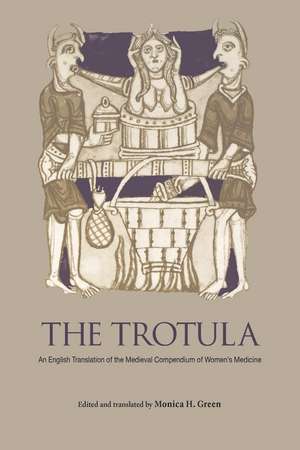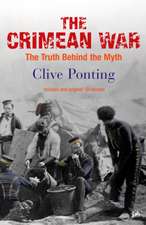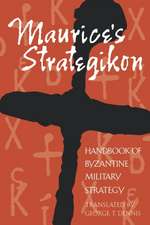The Trotula – An English Translation of the Medieval Compendium of Women`s Medicine: The Middle Ages Series
Autor Monica H. Greenen Limba Engleză Paperback – 24 iun 2002
Din seria The Middle Ages Series
-
 Preț: 195.13 lei
Preț: 195.13 lei -
 Preț: 192.05 lei
Preț: 192.05 lei -
 Preț: 281.27 lei
Preț: 281.27 lei -
 Preț: 199.23 lei
Preț: 199.23 lei -
 Preț: 198.22 lei
Preț: 198.22 lei -
 Preț: 240.85 lei
Preț: 240.85 lei -
 Preț: 192.05 lei
Preț: 192.05 lei - 19%
 Preț: 509.33 lei
Preț: 509.33 lei -
 Preț: 245.45 lei
Preț: 245.45 lei -
 Preț: 232.87 lei
Preț: 232.87 lei -
 Preț: 286.76 lei
Preț: 286.76 lei -
 Preț: 192.05 lei
Preț: 192.05 lei -
 Preț: 247.43 lei
Preț: 247.43 lei -
 Preț: 231.78 lei
Preț: 231.78 lei -
 Preț: 193.04 lei
Preț: 193.04 lei -
 Preț: 191.00 lei
Preț: 191.00 lei -
 Preț: 216.43 lei
Preț: 216.43 lei -
 Preț: 267.27 lei
Preț: 267.27 lei -
 Preț: 285.64 lei
Preț: 285.64 lei -
 Preț: 285.64 lei
Preț: 285.64 lei -
 Preț: 248.56 lei
Preț: 248.56 lei -
 Preț: 323.44 lei
Preț: 323.44 lei -
 Preț: 197.18 lei
Preț: 197.18 lei -
 Preț: 230.41 lei
Preț: 230.41 lei -
 Preț: 243.06 lei
Preț: 243.06 lei -
 Preț: 154.43 lei
Preț: 154.43 lei -
 Preț: 191.00 lei
Preț: 191.00 lei -
 Preț: 317.31 lei
Preț: 317.31 lei -
 Preț: 406.68 lei
Preț: 406.68 lei - 19%
 Preț: 446.65 lei
Preț: 446.65 lei -
 Preț: 183.69 lei
Preț: 183.69 lei -
 Preț: 285.88 lei
Preț: 285.88 lei - 19%
 Preț: 363.86 lei
Preț: 363.86 lei -
 Preț: 216.36 lei
Preț: 216.36 lei -
 Preț: 290.05 lei
Preț: 290.05 lei - 19%
 Preț: 420.72 lei
Preț: 420.72 lei - 23%
 Preț: 538.83 lei
Preț: 538.83 lei -
 Preț: 458.15 lei
Preț: 458.15 lei - 30%
 Preț: 406.56 lei
Preț: 406.56 lei -
 Preț: 232.58 lei
Preț: 232.58 lei - 19%
 Preț: 365.58 lei
Preț: 365.58 lei -
 Preț: 198.22 lei
Preț: 198.22 lei -
 Preț: 322.52 lei
Preț: 322.52 lei -
 Preț: 174.65 lei
Preț: 174.65 lei -
 Preț: 405.32 lei
Preț: 405.32 lei -
 Preț: 243.06 lei
Preț: 243.06 lei -
 Preț: 428.40 lei
Preț: 428.40 lei - 19%
 Preț: 415.73 lei
Preț: 415.73 lei -
 Preț: 239.77 lei
Preț: 239.77 lei
Preț: 173.87 lei
Nou
33.27€ • 34.82$ • 27.69£
Carte disponibilă
Livrare economică 10-24 martie
Livrare express 22-28 februarie pentru 25.89 lei
Specificații
ISBN-10: 0812218086
Pagini: 248
Ilustrații: 9 illustrations
Dimensiuni: 164 x 226 x 15 mm
Greutate: 0.39 kg
Editura: MT – University of Pennsylvania Press
Seria The Middle Ages Series
Locul publicării:United States
Descriere
The Trotula was the most influential compendium of women's medicine in medieval Europe. Scholarly debate has long focused on the traditional attribution of the work to the mysterious Trotula, said to have been the first female professor of medicine in eleventh- or twelfth-century Salerno, just south of Naples, then the leading center of medical learning in Europe. Yet as Monica H.
Green reveals in her introduction to the first English translation ever based upon a medieval form of the text, the Trotula is not a single treatise but an ensemble of three independent works, each by a different author. To varying degrees, these three works reflect the synthesis of indigenous practices of southern Italians with the new theories, practices, and medicinal substances coming out of the Arabic world. Green here presents a complete English translation of the so-called standardized Trotula ensemble, a composite form of the texts that was produced in the midthirteenth century and circulated widely in learned circles.
The work is now accessible to a broad audience of readers interested in medieval history, women's studies, and premodern systems of medical thought and practice.














